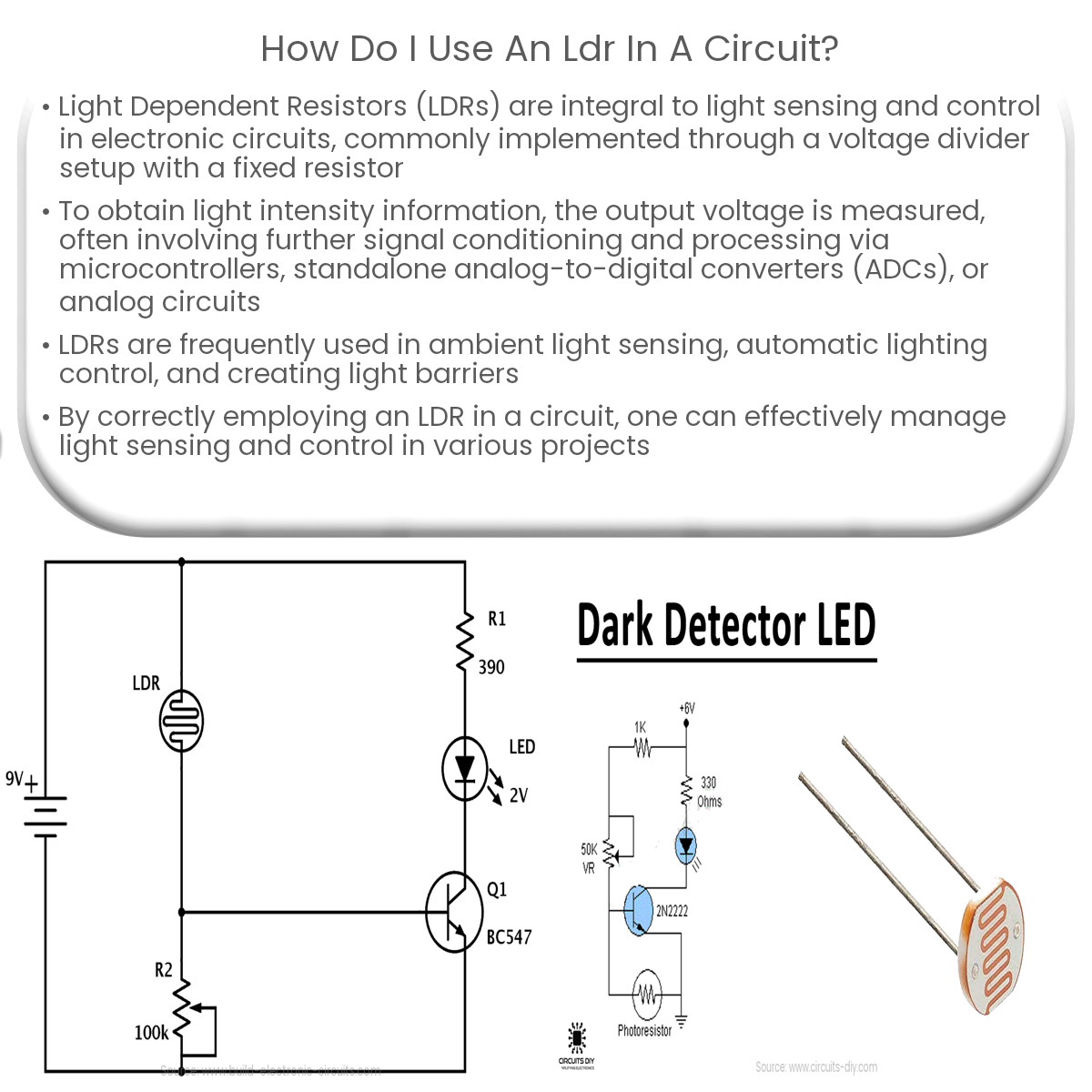To use an LDR in a circuit, create a voltage divider with a fixed resistor, measure output voltage, and process the signal to determine light intensity.
Using an LDR in a Circuit
Light Dependent Resistors (LDRs) are widely used in electronic circuits for light sensing and control. This article will discuss how to use an LDR in a circuit, including necessary components and steps for proper implementation.
Voltage Divider Circuit with LDR
A common way to use an LDR in a circuit is to create a voltage divider with a fixed resistor. The steps to set up a voltage divider circuit with an LDR are as follows:
- Select a fixed resistor: Choose a resistor with a value close to the LDR’s resistance at the midpoint of the desired light range for better sensitivity and linearity.
- Connect the LDR and resistor in series: Connect one end of the LDR to the positive supply voltage and one end of the fixed resistor to the ground.
- Measure the output voltage: Connect the junction of the LDR and fixed resistor to an analog-to-digital converter (ADC) or an op-amp circuit for further signal conditioning and processing.
Signal Conditioning and Processing
Once the output voltage is obtained, further signal conditioning and processing may be required to convert the voltage into a light intensity value. This can be achieved using microcontrollers, dedicated analog-to-digital converters, or analog circuitry:
- Microcontroller: Utilize an ADC integrated within a microcontroller to measure the output voltage and use software algorithms to convert the voltage into a light intensity value.
- Analog-to-digital converter: Use a standalone ADC to measure the output voltage and communicate the data to a microcontroller or other digital processing unit for conversion.
- Analog circuitry: Employ analog circuits such as op-amps, comparators, or voltage-to-frequency converters to process the output voltage and obtain a light intensity value.
Common Applications
Here are some common applications of LDRs in electronic circuits:
- Ambient light sensing: Measure ambient light levels and adjust display backlight brightness or trigger other actions in response to changing conditions.
- Automatic lighting control: Control indoor or outdoor lighting systems based on ambient light levels, conserving energy and providing optimal illumination.
- Light barriers: Create optocouplers or light barriers for switching, isolation, or presence detection purposes in conjunction with LEDs or other light sources.
Conclusion
Using an LDR in a circuit involves setting up a voltage divider, measuring the output voltage, and processing the signal to obtain light intensity information. By following these steps, you can effectively utilize LDRs for light sensing and control in your projects and designs.


